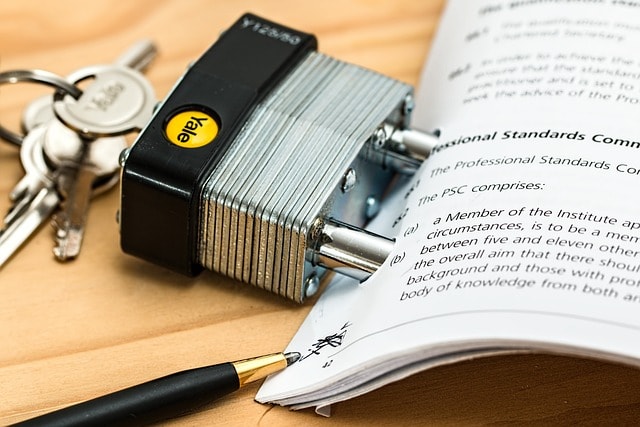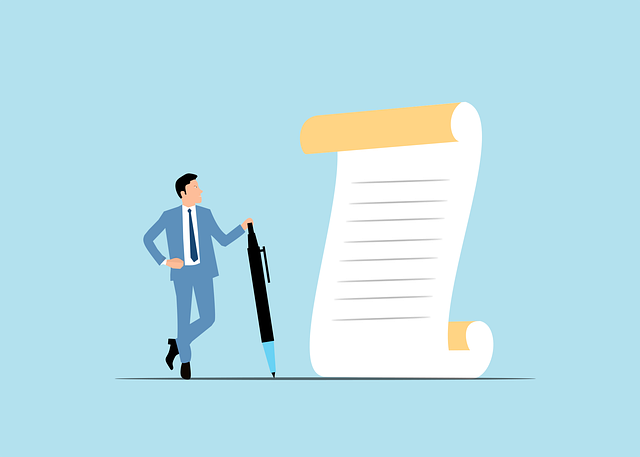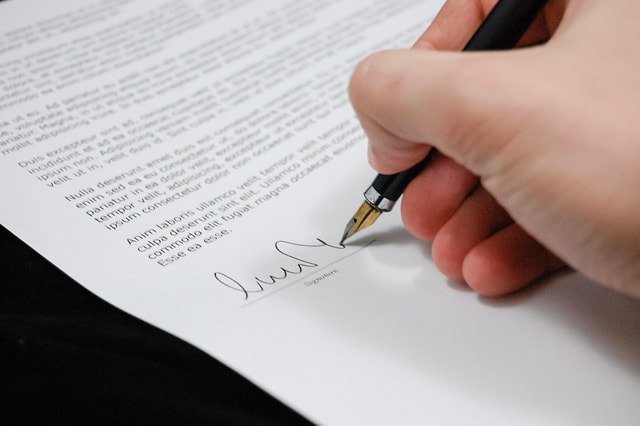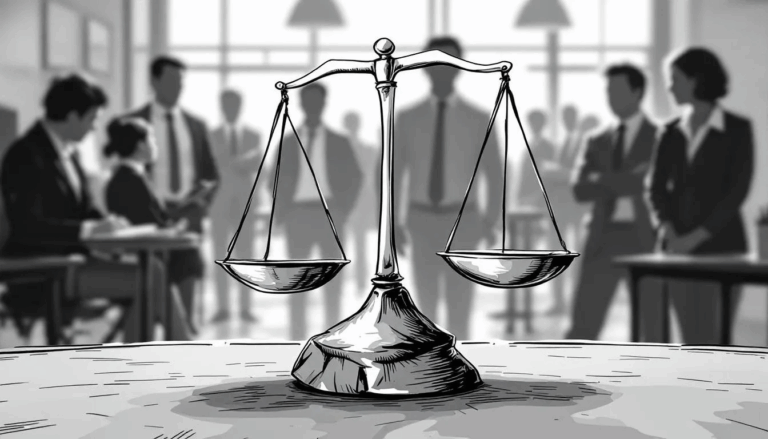Companies believe that employee confidentiality agreements are crucial for safeguarding a company’s sensitive information. These agreements outline what a company wants to be protected and the consequences of breaches. This article will explain what they exist, their main components, and how they are enforced. If you think you have a claim that involves a confidentiality agreement, here is a link to an article with a free online tool to help evaluate your potential claim.
Key Takeaways
- Employee confidentiality agreements try to protect sensitive company info and clarify what employees can and can’t disclose.
- Different types of non-disclosure agreements (unilateral, bilateral, multilateral) serve various situations where a company thinks that confidentiality is crucial.
- Some companies actively monitor and take swift action against breaches, but there are also whistleblower protections that must be considered.
What is an Employee Confidentiality Agreement?

An employee confidentiality agreement is a legal document designed to prevent the disclosure of sensitive company information. Its primary function is to safeguard trade secrets and other confidential information that could harm the company if leaked. When you start a new job, employers typically introduce this employee non disclosure agreement right away. At this stage, employers may request that employees sign a confidentiality agreement as a condition of employment. The process involves the employee agreeing to the terms, often in writing, to protect confidential information, ensuring both legal compliance and mutual understanding.
New hires are usually given ample time to read and understand the confidentiality agreement before signing. This practice ensures employees fully comprehend their obligations, minimizing accidental breaches. Ideally, the agreement is signed before the official start date, allowing new employees to familiarize themselves with their confidentiality responsibilities. When the employee acknowledges these terms, it reinforces their commitment to confidentiality. Having employees sign a confidentiality agreement also serves as legal proof of their commitment to maintaining confidentiality.
The benefits of signing a confidentiality agreement extend beyond just protecting the company. It provides employees with a clear understanding of what constitutes confidential information and the operating boundaries. This clarity builds trust and ensures both parties are aligned from the start.
Key Components of Confidentiality Agreements
A well-drafted confidentiality agreement is like a sturdy lock on a vault of precious information. A key component is the clear specification of what qualifies as confidential information, including private information and proprietary information, eliminating any ambiguity about what needs to be protected. The provisions of the agreement should clearly specify the types of information covered, such as customer lists, client lists, and proprietary data. The scope of the agreement should be limited to only necessary confidential information to avoid overbroad restrictions that could be unenforceable.
Another critical aspect is the duration of the confidentiality agreement. Typically, these agreements last from one to three years, but they can also be indefinite or tied to specific events. Nondisclosure obligations often extend beyond the termination of the agreement, typically ranging from one to five years, ensuring sensitive information remains secure long after an employee departs.
Lastly, the agreement should specify the repercussions for any violations. This approach deters potential breaches and underscores the seriousness of confidentiality obligations to prohibit employees. Penalties for breaches can vary, but they often include termination of employment and legal action to recover damages, within the limits of the law.
Types of Non Disclosure Agreements
Non-disclosure agreements (NDAs) come in different flavors, each tailored to specific situations. The most common type is the unilateral NDA, also known as a one-way agreement:
- This type involves one party sharing confidential information.
- It is commonly used between employers and employees.
- For instance, a company shares its trade secrets with an employee, who is then prohibited from disclosing them in a non disclosure contract.
Next, we have bilateral NDAs, often referred to as mutual agreements. These are used when both parties need to exchange confidential details with each other. Common scenarios include:
- Mergers
- Acquisitions
- Joint ventures where both sides have sensitive information to protect When two companies collaborate on a project, both need to ensure their respective secrets remain secure.
Lastly, multilateral NDAs involve three or more parties. They are particularly useful when multiple organization collaborate on a single project:
- One party discloses information while the others are obligated to protect it.
- This agreement type simplifies the process by replacing multiple separate contracts.
- It eases the management of confidentiality obligations among several parties.
Legal Implications of Breaching Confidentiality

Breaching a confidentiality agreement can lead to a cascade of legal troubles. The most immediate consequence is the potential for lawsuits, which can result in significant monetary damages and even termination of employment. If an employee discloses confidential information, the employer can sue for breach of contract and seek compensation for incurred losses. A confidentiality agreement can also support an employer’s claim of trade secret protection in court, serving as evidence to establish the employer’s right to enforce confidentiality protections.
Employers might seek injunctive relief, a court order compelling the violator to stop further disclosed. This is crucial for breaches involving sensitive information, like trade secrets, to prevent further damage. In some cases, the breach might even lead to criminal charges, especially if it involves the theft of trade secrets act. There are cases where the court held that after-acquired evidence of an employee’s breach of confidentiality or misconduct can impact the outcome of legal disputes. An employee’s breach can justify termination and may limit the employee’s employment rights or recovery, particularly when such misconduct is discovered after termination.
Beyond the immediate legal and financial repercussions, breaching confidentiality can have long-lasting effects on an individual’s career. Reputational damage can make it challenging to secure future employment, as potential employers may be wary of hiring someone with a history of breaking confidentiality obligations. Thus, a well-crafted confidentiality agreement must outline penalties for breaches, ensuring employees grasp the gravity of their obligations. If a violation occurs, employers should document the breach and consider filing a complaint or lawsuit to enforce the agreement.
Employers are strongly advised to consult an attorney to review, draft, or negotiate confidentiality agreements to ensure they are enforceable and compliant with applicable laws.
Best Practices for Employers

Employers must adopt best practices to ensure their confidentiality agreements are effective and up-to-date. As business needs evolve, so should the agreements. Regular reviews and updates to align with current practices and company values are essential. Conducting research on state and federal legal requirements is crucial to ensure that confidentiality agreements comply with all applicable laws and regulations. For example, unilateral NDAs are commonly used between employers and employees to protect sensitive information.
Regular training on data handling procedures ensures employees know how to manage and store confidentiality agreements securely. This training course also extends to HR staff, enhancing the protection of sensitive documents. Key practices include:
- Providing regular training on data handling procedures
- Extending training to HR staff for better protection of sensitive documents
- Using digital signatures to simplify the signing process and prevent document loss, making the process less time consuming for both employers and employees
These measures make it easier for employees to sign confidentiality agreements in a streamlined form without hassle.
Employers should maintain a playbook for identifying and responding to breaches related to the subject of sensitive information. Regular protective measures, like a clean desk policy and secure HR management tools, significantly help safeguard sensitive information, making employers more aware of potential risks.
How Companies Enforce Confidentiality Agreements

Enforcing confidentiality agreements is a multi-step process that often involves vigilance and swift action. The process begins by identifying breaches through monitoring employee activities and reviewing communications. Upon identification, a cease and desist letter is usually the first legal enforcement action, demanding the violator stop further disclosures. It is common to follow up by requesting the violator to acknowledge receipt or sign the letter to ensure compliance.
If breaches persist, companies might seek injunctive relief through the courts to prevent further unauthorized disclosures, a critical step when dealing with potentially harmful sensitive information and applicable laws. Enforcement is especially important when the confidential information includes intellectual property, as additional protections may be necessary to fully safeguard ownership and invention rights. Businesses may also pursue claims and damages through legal action, including a lawsuit, if a breach has resulted in financial loss or reputational harm.
Alternative dispute resolution methods, like mediation, can be more efficient than traditional litigation for enforcing confidentiality agreements. These methods generally offer a less adversarial approach, beneficial for maintaining business relationships.
Whistleblower Protections and Exceptions
While confidentiality agreements are essential, they are not absolute. Employers are not allowed to mandate that employees keep company law violations secret. This provision allows employees to report wrongdoing without fear of repercussions. The Dodd-Frank Act supports whistleblowers by preventing employers from using confidentiality agreements to hinder reporting, ensuring employees can report legal violations without fear of retaliation, as permitted. Confidentiality agreements cannot prevent employees from reporting unlawful conduct, such as fraud or other illegal activities.
Whistleblower laws shield employees from retaliation for reporting legal violations. Employers cannot retaliate against those who report such violations, and whistleblowers can take legal action against employers for retaliation within two years of the incident. These protections ensure that employees can come forward without fear of discrimination or other adverse actions. Recent laws, such as the Speak Out Act, also limit the use of confidentiality agreements to silence employees about sexual misconduct or harassment in the workplace.
How Companies Store and Manage Confidentiality Agreements

Many companies think that storing and managing confidentiality agreements securely is paramount to protecting sensitive information. Organizations need to store these agreements securely to protect employee privacy and comply with legal requirements. Access should be restricted based on the principle of least privilege, allowing only authorized personnel to view sensitive information.
HR management tools can enhance the security of storing confidentiality agreements by enforcing access controls and audit trails. Physical copies should be kept in lockable storage to prevent unauthorized access to the file. A clean desk policy can help minimize the risk of exposing unattended confidential agreements.
Confidential information should be stored only in approved business software to mitigate data breach risks. Such confidential information, such information includes shredding unneeded documents containing confidential agreements, which is crucial for secure disposal and preventing data leaks.
Summary
In summary, many companies think that employee confidentiality agreements are indispensable tools for protecting sensitive company information. From understanding what these agreements are and their key components to recognizing the legal implications of breaches and best practices for employers, we’ve covered a comprehensive range of topics. The importance of enforcing these agreements and the protections available for whistleblowers further underscore the need for robust confidentiality measures.
As businesses continue to evolve, so must their approaches to confidentiality. By staying informed and proactive, employers and employees alike can ensure that sensitive information remains secure, fostering a trustworthy and competitive work environment.
Frequently Asked Questions
What is an employee confidentiality agreement?
An employee confidentiality agreement is a legal document that keeps your company’s sensitive info under wraps. It’s all about protecting the secrets that help your business thrive!
What are the key components of a confidentiality agreement?
The key components of a confidentiality agreement are clearly defining what counts as confidential information, how long the agreement lasts, and the penalties for breaches. Make sure these aspects are crystal clear to protect everyone’s interests!
What are the different types of non-disclosure agreements?
So, you’ve got three main types of non-disclosure agreements: unilateral, which is one-sided; bilateral, where both parties share info; and multilateral, involving multiple parties. Each one fits a different scenario, so choose the right one based on your needs!
What are the legal implications of breaching a confidentiality agreement?
Breaching a confidentiality agreement can really backfire, leading to lawsuits, financial penalties, or even job loss, and in some instances, criminal charges. There is a lot of risk to consider!
How are confidentiality agreements be stored and managed?
Companies often store confidentiality agreements securely and limit access to authorized personnel only. HR management tools sometimes keep everything organized and safe.



